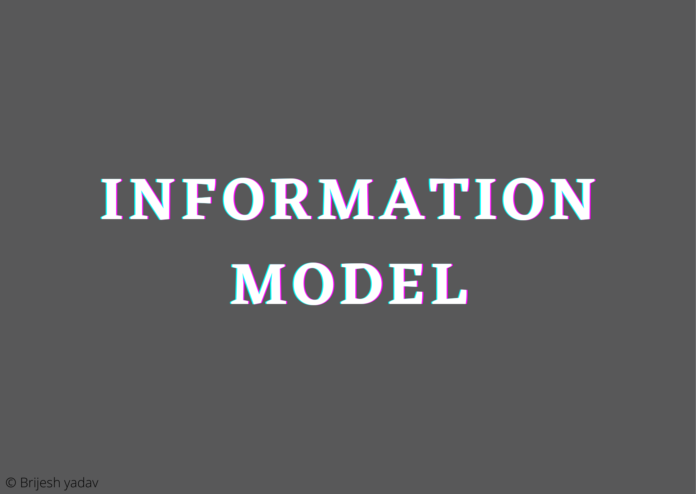The information model and its approaches
An information model is a representation of concepts and the relationships, constraints, rules, and operations to specify data semantics for a chosen domain. It can provide the sharable, stable, and organized structure of information required or knowledge for the domain contexts.
The information model and its approaches-
Following are the various approaches used for the information modeling:
1. Informal approach:
i. An informal approach, no methodology is used. In this approach no formal system model
ii. Tie problem and the system models are essentially built into the mind of analysts and directly translated from the mind of the analyst to the SRS.
2. The formal approach/structured approach:
i. In structured analysis techniques, we use functional-based decomposition while modeling the problem.
ii. It focuses on the function performed in the problem domain and data consumed and produced by these functions.
3. Object-oriented modeling:
i. Object-oriented modeling uses an approach in which the problem is partitioning with respect to objects.
ii. In object-oriented modeling, a system is viewed as a set of objects.
4. Structured analysis and design techniques (SADT):
i. Structured analysis and design techniques (SADT) are design for information processing systems.
ii. A model in SADT is a hierarchy of diagrams that supports a top-down approach for analysis and specification.
iii Its specification language is a combination of graphical language and natural language.
5. Problem statement language (PSL) / Problem statement analyzer (PSA):
i. The problem statement language is design to specify the requirements of information systems. It is a textual language.
ii. In PSL, the system input/output flow deals with the interaction of the data system with the environment and specifies all the inputs received and all the outputs produced.
iii PSA operates on the database of information collected from the PSL description of requirements.
6. Entity-relationship modeling:
i. If the application is a database application, the entity-relationship (ER) approach can be use effectively for modeling some parts of the problem.
ii. The main focus of ER modeling is the data items in the system and the relationship between them.
iii. It aims to create a conceptual schema for the data from the user perspective.
Read more about Software configuration management





